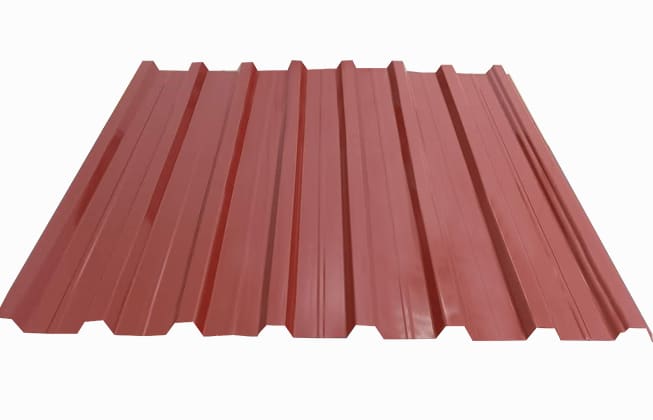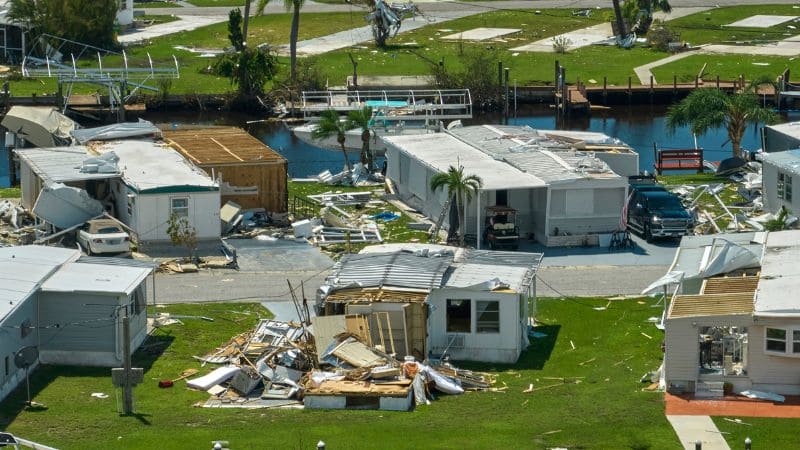In typhoon-prone areas like the Philippines, picking the right roofing material is crucial because of the extreme weather. Strong, durable materials can handle high winds, heavy rain, and flying debris, keeping homes safe and secure. The right roof for typhoon also protects your home’s structure and cuts down on repair costs, making it a key decision.
Key Factors to Consider When Choosing Typhoon-Resistant Roofing Materials
When selecting typhoon-resistant roofing materials, keep the following factors in mind:
A. Material Strength and Durability.
Choosing roofing materials that can handle strong winds and impacts is key to keeping your home safe during bad weather. Strong materials prevent damage from gusts and flying debris, reducing leaks and structural issues. This extends your roof’s lifespan, cuts repair costs, and ensures your home stays secure, giving you peace of mind.
B. Wind Uplift Resistance
Strong winds can create pressure differences between the top and bottom of a roof, causing wind uplift that might lift the roof off. This pressure can push roof materials upward, leading to damage or detachment. Roofing design needs secure attachment systems, reinforced edges, and well-sealed joints to boost wind resistance. A well-designed roof keeps the roof intact during severe weather by ensuring it can handle strong winds effectively.
C. Water Resistance and Leak Prevention
Choosing materials that keep water out is key to keeping your home dry and safe. Look for features like capillary grooves that direct water away from seams and joints, and seamless installation to prevent gaps where water can seep in. Quality waterproof membranes and flashing also boost leak resistance. Carefully chosen and installed materials avoid mold growth and water damage, ensuring your roof lasts longer and your home stays protected. Investing in these features helps safeguard your home from moisture-related issues.
D. Weight and Structure Compatibility
When choosing roofing materials, consider their weight to your building’s structural capacity. Heavy materials might put extra strain on the structure and require added support. Lighter materials can reduce the load but may not be as durable. Ensuring the roofing material matches your building’s capacity helps maintain its integrity and safety while avoiding costly adjustments or future damage.
E. Installation Quality
Proper installation is key to the long-term performance of roofing materials and protecting your property. Even top-quality materials can fail if not installed correctly, leading to leaks and structural issues. Experienced professionals ensure that materials are installed according to manufacturer guidelines and best practices, handling details like flashing, secure attachment, and sealing. Their expertise helps avoid serious problems and ensures your roof lasts and performs well. Choosing skilled installers guarantees the job is done right and maximizes the benefits of your chosen materials.
Union GalvaSteel Corporation combines premium roofing materials with expert installation. Our top-notch products ensure durability and performance, while our skilled technicians provide precise installation for long-lasting protection. Count on us for a weather-resistant roofing solution that boosts your home’s value. Choose Union GalvaSteel for exceptional service and reliable, high-performance roofing.
Popular Types of Roofing Materials for Typhoon-Prone Regions

Braving typhoons starts with a strong roof. Explore the best types of roofing materials designed to withstand fierce winds and heavy rains, ensuring your home stays safe and secure through every storm.
A, Metal Roofing. Metal roofing is well known for being extremely wind-resistant and long-lasting. Because it is made of materials like steel or aluminum, it is resistant to harsh weather, such as strong winds and torrential rain. Because they are resistant to corrosion, bending, and cracking, metal roofs are perfect for harsh climates. For homes located in storm-prone locations, metal roofing is a dependable option due to its strong structure and interlocking panels, which prevent wind uplift and guarantee endurance. Options under this steel roofing category include long-span roofs, rib-type roofing, and corrugated roofing.
B. Asphalt Shingles. Asphalt shingles are a budget-friendly and easy-to-install option. However, they can struggle with strong winds and heavy rain typical in typhoon-prone areas, potentially leading to damage or loss. While some shingles are designed to resist wind, they generally don’t offer the same protection as metal or tile roofs. Although high-quality shingles and proper installation can improve performance, they often need more maintenance and have a shorter lifespan in severe weather conditions.
C. Concrete and Clay Tiles. Concrete and clay tiles are excellent for harsh conditions due to their strength and durability. They handle impacts, heavy rain, and strong winds exceptionally well, making them ideal for tough environments. Their solid construction protects against storms and flying debris. With minimal maintenance, these tiles can last for decades and provide great insulation. Their weight and interlocking design further enhance wind resistance, offering reliable protection and long-lasting performance in extreme weather.
D. Stone-coated Roofing. Stone-coated roofing is a long-lasting and stylish solution for regions vulnerable to typhoons. It mixes metal panels with a covering of stone for protection. The stone covering provides good insulation and strengthens resistance against impacts, strong winds, and heavy rain. This kind of roofing offers long-term protection by being made to resist severe weather and stop leaks. Homes that frequently experience storms and other extreme weather conditions can rely on it because of its sturdy structure and resistance to the elements.
Why Union Galvasteel Multi-rib8 Is the Ideal Choice for Typhoon-Prone Areas

Introducing Union Galvasteel Multi-rib8, a cutting-edge roofing option with a durable, multi-rib design for exceptional strength and longevity. It is built to withstand severe weather conditions and offers superior protection and a sleek, modern look.
The 8-rib design of Union Galvasteel Multi-rib8 significantly enhances its wind resistance. This design provides the following features:
Key Features:
- Durable, multi-rib design: Provides exceptional strength and longevity.
- Superior weather resistance: Built to withstand severe weather conditions.
- Sleek, modern look: Enhances your home’s aesthetic appeal.
- Enhanced wind resistance: The 8-rib design reduces wind uplift and provides added stability.
- Effective water channeling: Capillary grooves prevent leaks and keep your roof dry.
- Long-lasting protection: Offers reliable performance and durability.
Choose Union Galvasteel Multi-rib8 for top-notch protection and durability. Its innovative design, with enhanced wind resistance and capillary grooves to prevent leaks, ensures your roof can handle extreme conditions.
Contact us today to learn more about roofing materials and price list in the Philippines. Get in touch with us via our website and Facebook or call these numbers for help: 09175033965 (Globe) and 09190032303 (Smart). You can also email us at inquiries@cmg.ph.




